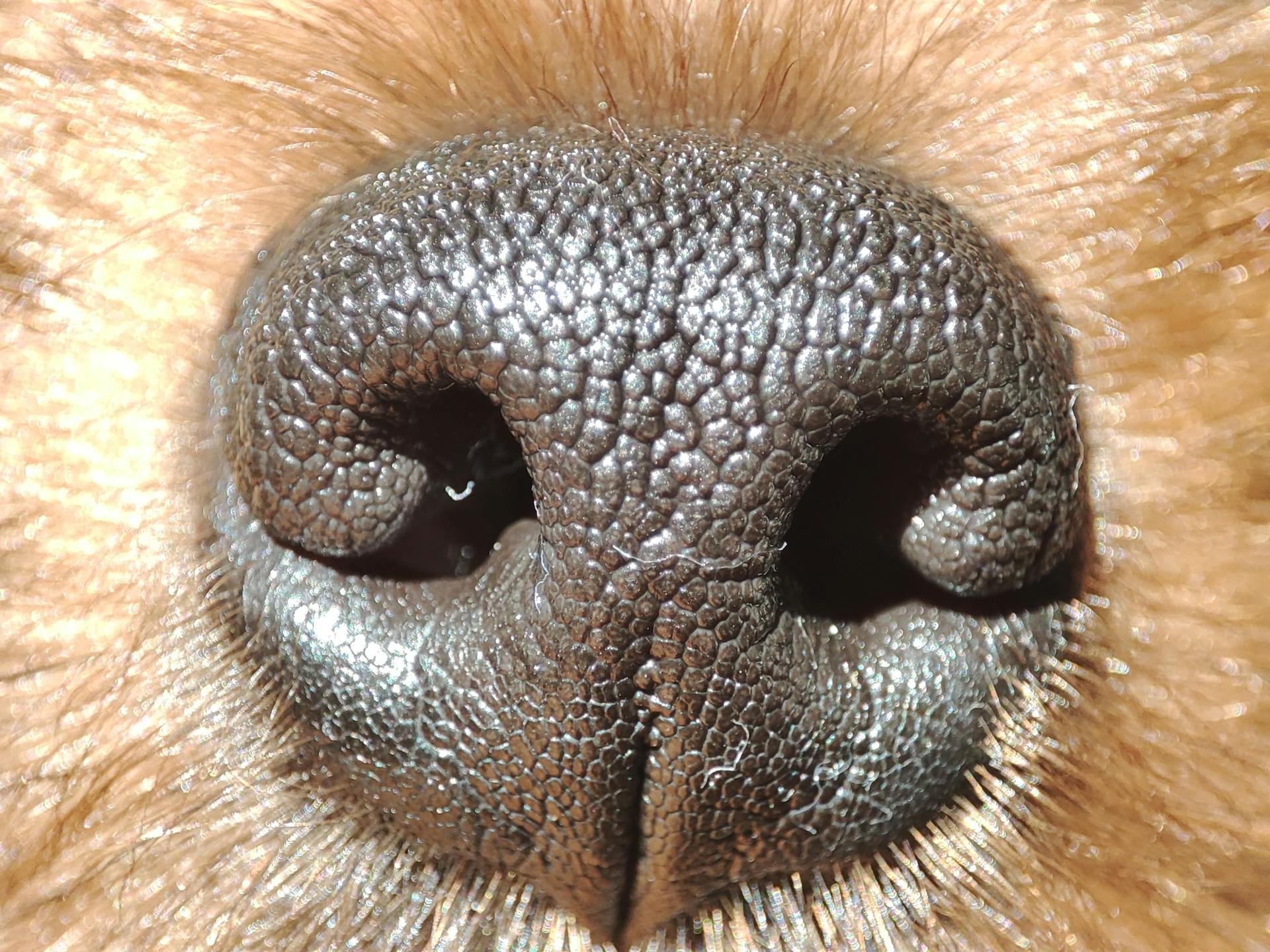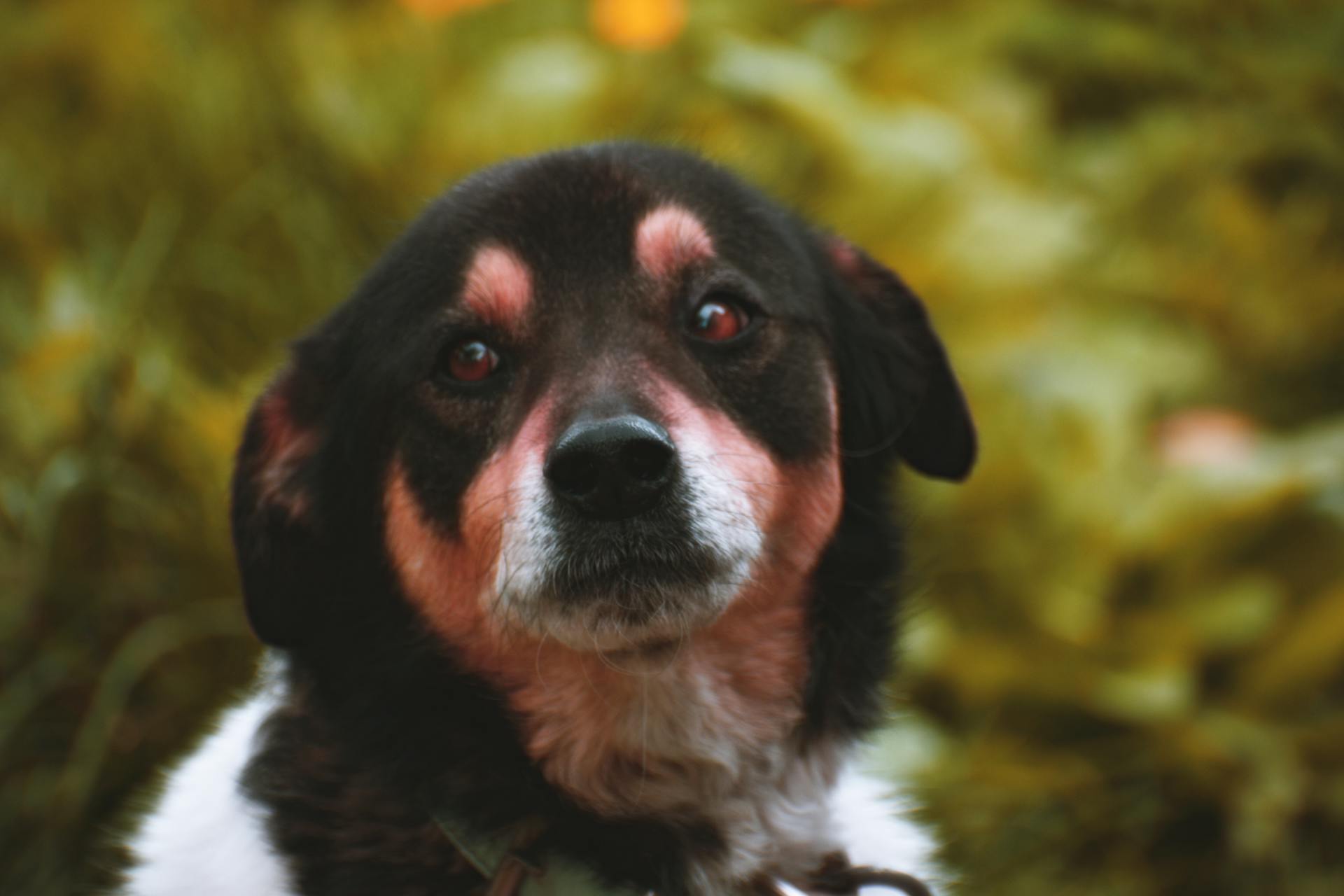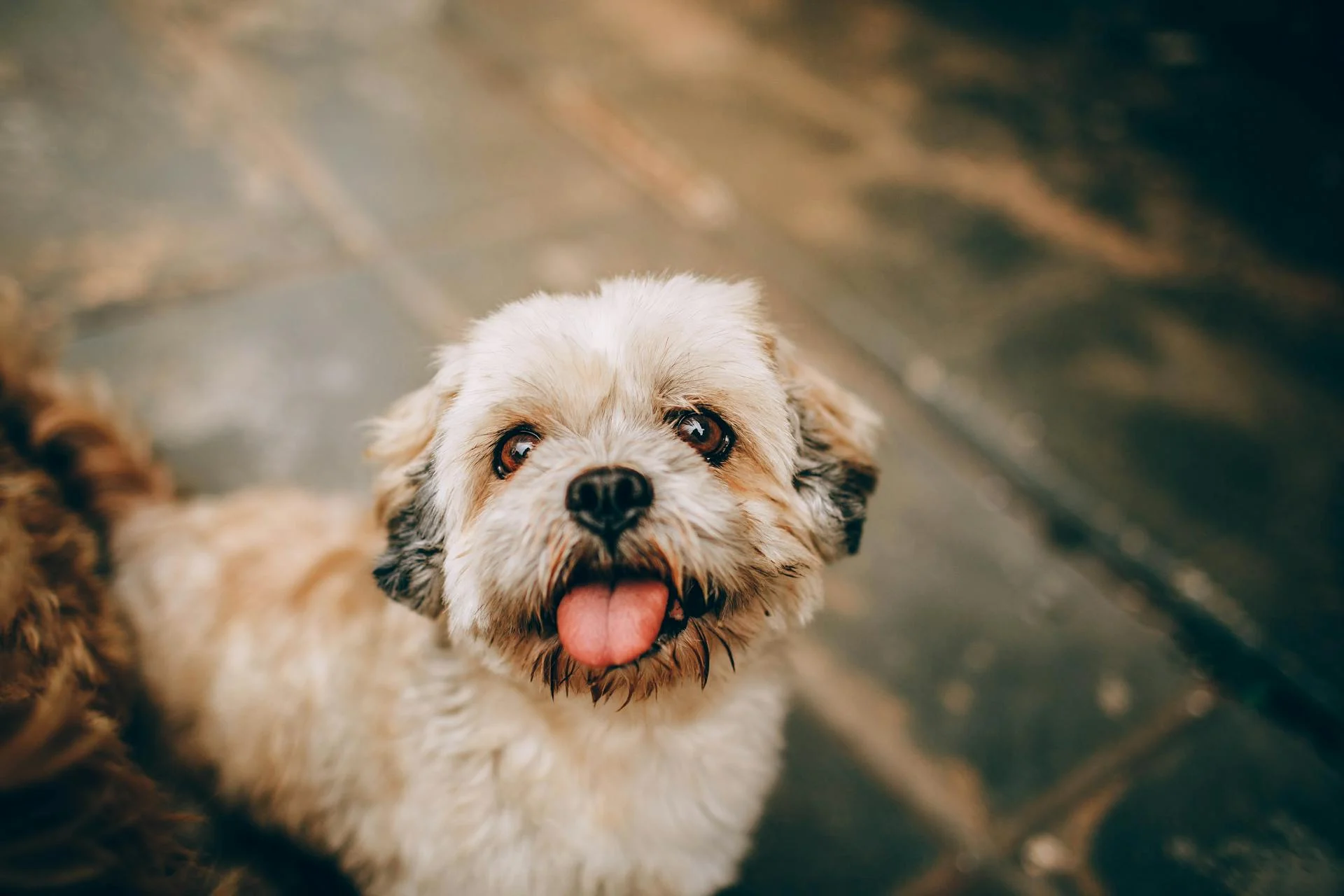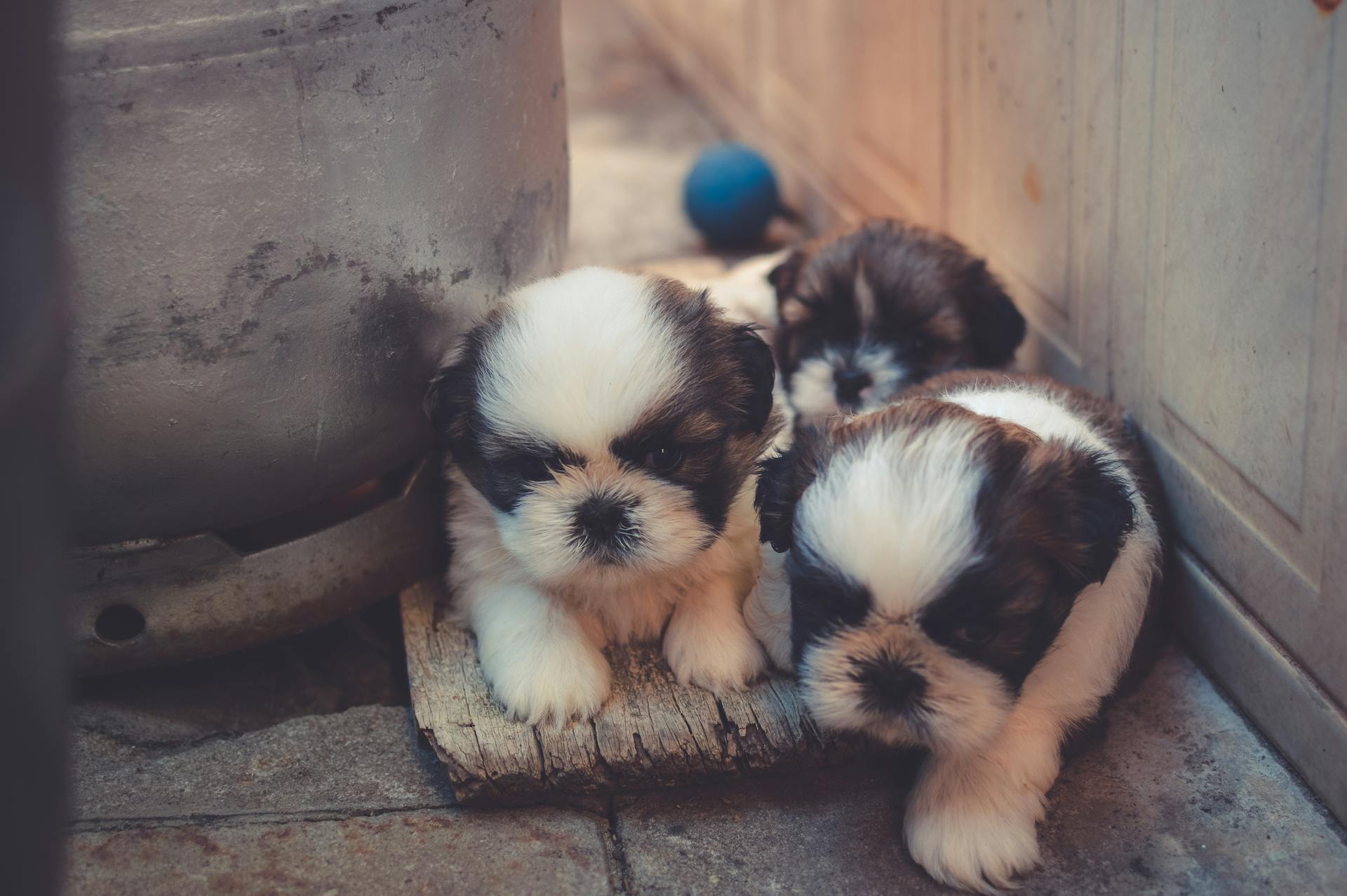
The Liver and White Shih Tzu is a unique and charming breed that has captured the hearts of many dog owners. They are a variation of the Shih Tzu breed, known for their distinctive liver-colored coat with white markings.
Their small size makes them a great companion for apartment living, weighing between 9-16 pounds and standing about 8-11 inches tall at the shoulder. They have a long, flowing coat that requires regular grooming to prevent matting and tangling.
Their friendly and outgoing personalities make them a great fit for families with children, as they are known to be gentle and affectionate. They are also relatively low-maintenance when it comes to exercise, requiring short daily walks to stay happy and healthy.
History and Origins
The Shih Tzu breed has a fascinating history that spans centuries. The exact origin of the Shih Tzu is unclear, but one theory suggests they descended from a cross between the Pekingese and Lhasa Apso.
These dogs were highly prized by the Chinese royals during the Ming Dynasty, who refused to sell, trade, or give them away. The Dowager Empress Cixi even developed a program dedicated to breeding Shih Tzus to win favor with the Emperor.
The first Shih Tzus were imported into Europe in the 1920s and 1930s, with Lady Brownrigg bringing two Shih Tzus to England in 1928. These dogs were initially classified as "Apsos" by the Kennel Club.
The breed was later recognized as Shih Tzu in 1935 by the Shih Tzu Club in England, following the first congregation of these dogs at Crufts in 1933. The breed spread throughout Europe and was brought to the United States after World War II.
Unfortunately, the Shih Tzu breed faced extinction in China during the Chinese Communist Revolution in 1949, when all Shih Tzus were killed off due to their association with wealth. Today, the modern Shih Tzu is descended from 13 dogs imported to England and Scandinavia between 1928 and 1952.
If this caught your attention, see: Shih Tzu Puppy First Haircut
Health and Genetics
Shih Tzus, including liver and white ones, can be prone to certain health issues due to their genetics and breeding history.
The popularity of the breed has led to extremely poor breeding in general, resulting in generalized and lifelong diseases that often appear at a fairly early age.
Regular vet check-ups and care from a responsible breeder play a vital role in ensuring the dog's health, regardless of coat color.
Shih Tzus can and do become deaf, and some studies suggest that breeds with white or merle coat colors have a higher incidence of deafness.
However, it's crucial to note that the color of a Shih Tzu's coat should not be the determining factor in predicting health risks.
Check this out: English Springer Spaniel Colors Tri Color
Health
Shih Tzus are prone to eye problems, which can start at any age, and become more common as they get older. Regular eye check-ups with a veterinarian are crucial to catch any issues early on.
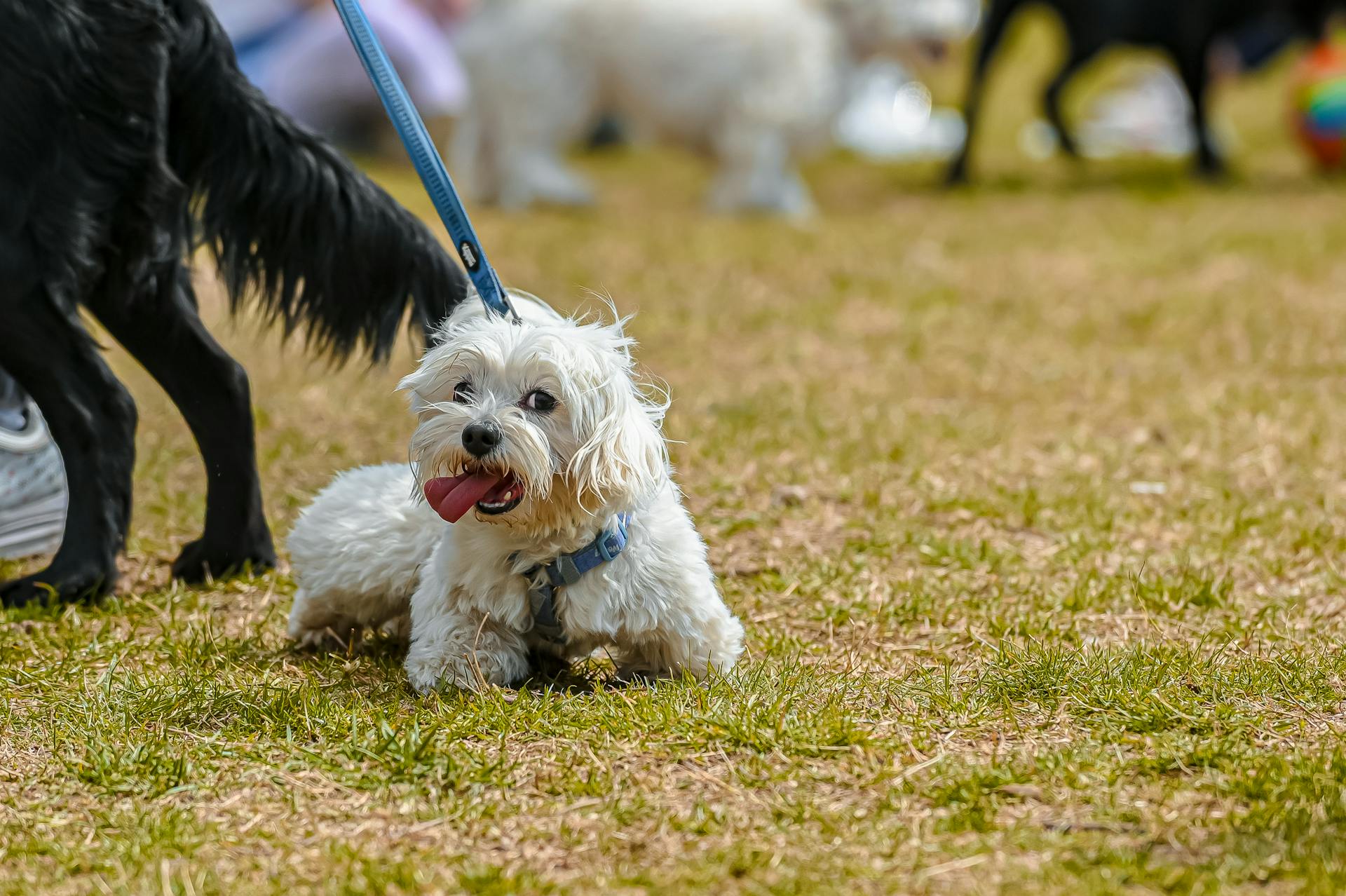
The distinctive large eyes of Shih Tzus can easily be scratched, leading to ulcers and excessive tears. This can be treated with prescribed eye drops from a certified veterinarian.
Excessive tear production is a common issue in Shih Tzus, causing tear stains around the eyes. This can be managed with regular cleanings and veterinary care.
Cataracts are a common age-related issue in Shih Tzus, which can be corrected with surgery if caught early. If left untreated, cataracts can cause blindness in the affected eye.
Shih Tzus are also prone to epiphora, a condition caused by the fur on their eyelids scratching the conjunctiva and cornea. This can be medicated with prescribed eye drops from a certified veterinarian.
Some research suggests a possible link between certain coat colors and health issues, but it's far from universally adopted or agreed upon.
Take a look at this: Why Do Maltese Dogs Have Tear Stains
Ear Issues
Ear issues are a common problem for Shih Tzus, especially with their long coat and hair that grows in their ears.
As their ears are prone to trapping moisture and debris, it's essential to pluck and clean them often to prevent ear infections from developing.
Ear infections can reoccur if ears are not properly maintained, leading to more serious health issues.
Regular ear cleaning can help prevent ear infections in Shih Tzus, making it a crucial part of their grooming routine.
The Genetics of Color
The genetics of Shih Tzu coat color involve complex interactions between various genes, each with their own dominant or recessive alleles. Essentially, each dog carries two versions of each gene, receiving one from each parent.
The B gene is a fundamental gene related to dog coat color, with the dominant version resulting in a black pigmented coat, and the recessive form resulting in a brown or liver-colored coat. The E gene is another critical one, responsible for the production of eumelanin, the pigment that leads to black or brown coloration.
On a similar theme: Pembroke Corgi Tri Color
The A series of genes determines the agouti patterns, causing bands of color on each individual hair. The D series affects the dilution of eumelanin and phaeomelanin pigments, leading to blue and Isabella coats. The M gene causes a merle coat, while the S gene affects the distribution of white areas on the coat.
The combination of these genes results in the wide variety of coat colors we see among Shih Tzus. The genetics of coat color is an incredibly complex part of breed science, with the astounding variety and breathtaking beauty of the Shih Tzu coat being a testament to this complexity.
Here are some of the most common two-color combinations in Shih Tzus:
- Black and White
- Blue and White
- Silver and White
- Red and White
- Gold and White
- Brindle and White
- Liver and White
Keep in mind that the color seen is also influenced by other genes, which can modify the dog's coat color.
On a similar theme: Liver Color Brittany Spaniel
Liver and White Shih Tzu
Liver and White Shih Tzus are sometimes called "chocolate" due to their brown coat color. They're not exclusively brown, though - you'll often find white patches on their chest and possibly elsewhere.
The "liver" name doesn't actually refer to the coat color, but rather the color of the dog's skin at their points, such as the nose, lips, and paw pads.
Description
The Liver and White Shih Tzu is a sturdy little dog with a small snout and large dark brown eyes, often described as having an "owl head" shape.
Their soft and long double coat can be prone to tangling and matting if not brushed regularly, ideally every 2 or 3 days.
The ideal weight for a Shih Tzu is between 9 and 17 pounds, and they should stand no more than 10.5 inches tall at the withers.
Their floppy ears are covered with long hair, and their heavily hair-covered tail is carried curled over the back.
The coat of a Liver and White Shih Tzu may be of any color, though white and grey are frequently seen.
Liver
Liver Shih Tzus are sometimes called “chocolate,” but their coat color is usually not exclusively brown.
They often have white patches on the chest and possibly elsewhere.
The “liver” name actually refers to the color of the dog’s skin at their points, such as the nose, lips, and paw pads.
Kennel Club Differences
If you're considering getting a liver and white Shih Tzu, you might be wondering about the differences between the breed standards of the American Kennel Club and the Kennel Club (UK). There is a difference between the Shih Tzu of the American Kennel Club and the Kennel Club (UK).
The American Kennel Club recognizes a liver and white Shih Tzu as a variation of the breed, but the Kennel Club (UK) does not. This is because the Kennel Club (UK) has a specific breed standard that does not include liver as a recognized color.
Suggestion: American Kennel Club Lancashire Heeler
Patterns and Markings
Sophie, a lovely Imperial Red and White Shih Tzu, had a unique pattern on her fur that looked like she had wings on her back. This pattern is often referred to as "angel wings."
Certain markings on a Shih Tzu's fur can occur, each with its own terminology. You might hear terms like blaze, flare, collar, shawl, saddle, and tuxedo used to describe the different patterns.
Suggestion: Shih Tzu Fur
A blaze is a strip of white hair right up the center of the face, between the eyes. It can flare out as it approaches the top of the skull. Some Shih Tzus also have a collar or shawl, a marking around the neck that's usually white.
Shih Tzus can have a saddle-shaped marking on their back, often white in color. And then there's the tuxedo pattern, where a white patch of hair is found on the chest, sometimes on the chin and feet.
These markings can add to the charm of a Shih Tzu's appearance, making each one unique and special.
Consider reading: Shih Tzu Good with Kids
Frequently Asked Questions
What do you call a Shih Tzu with brown nose?
A Shih Tzu with a brown nose is considered liver, not white, and may have lighter eyes and nose coloration. This is due to the breed standard requiring dark eyes, black eye rims, and a black nose for a true white Shih Tzu.
What is the rarest color of a Shih Tzu?
The rarest color of a Shih Tzu is Isabella, a pale greyish/blueish brown coat color caused by a recessive dilution gene. This unique color is extremely rare due to the combination of two rare genetic traits.
How do I know if my Shih Tzu has choco liver?
Check your Shih Tzu's skin points for liver coloration, which will be the same as their liver coat color. If you notice a light to dark brown color with a pink overlay on their skin points, it could indicate choco liver
Featured Images: pexels.com
